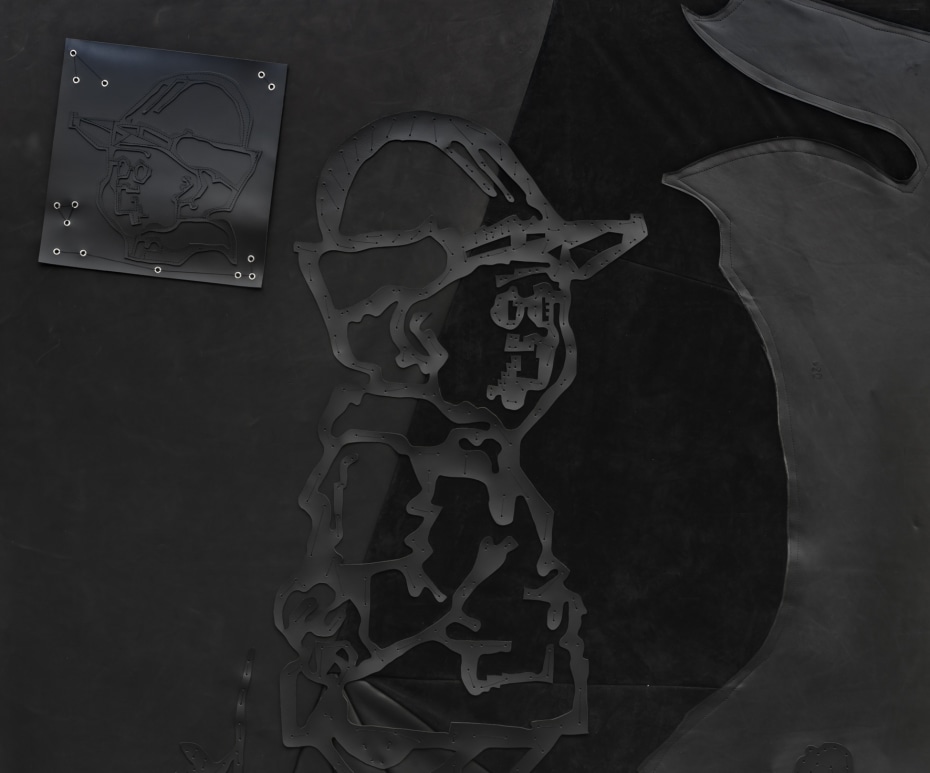Annet Gelink Gallery is proud to announce Wouter Paijmans’ first solo show in the gallery, Haberdashery, following his presentation in The Bakery in 2019.
In his practice, Wouter Paijmans focuses on the substantive and visual features of Western consumer society, such as abandoned shops, surplus stock, and imitation clothing. Originally trained as a painter, he increasingly began to question notions of production and practice in his role as an artist. He experimented with a routinised work regime of 8 hours of work, 8 hours of leisure and 8 hours of sleep, which were considered ideal working conditions at the time the textile industry emerged. As Paijmans' focus shifted from production to mass production and - consumption, he sought ways to produce faster and more efficient. Replicating and reproducing became his prime working methods. He exchanged the brush for needle and thread and became known, among other things, for introducing his so-called 'confection paintings': using 'original' work as a blueprint for replicas. The artist teased himself into boredom by reproducing copies of original textile panels, raising questions about originality, reproduction, and ownership - both within the confines of the art world and beyond. As such, he took on the double role of both the employee and manager of his own sweatshop.
The title of his latest show refers to the many buttons, zippers, needles, and threads that Paijmans discovered in his aunt’s archive, who works as a seamstress for a Dutch leather goods company and sparked his interest in working with leather. It also hints at the approach of assemblage that is characteristic for Paijmans’ work. In his quest for more freedom and less boredom in the production of his work, the artist came across so-called samplers: little embroideries made as a test and signpost of one's qualities in needlework. He uses these samplers, that he finds in his own family archive or regional companies, not as blueprints for endless copies, but as starting points to build on. Elements from these samplers are used and reproduced. However, no longer longing for the aura of the original, it is now the minor, human imperfections and developments that becomes visible in (re)creating these samplers, that interest him. Together, the works form a narrative of the artist's process and improvement, and lead back to Paijman's original area of interest: efficiency in the production of art.

